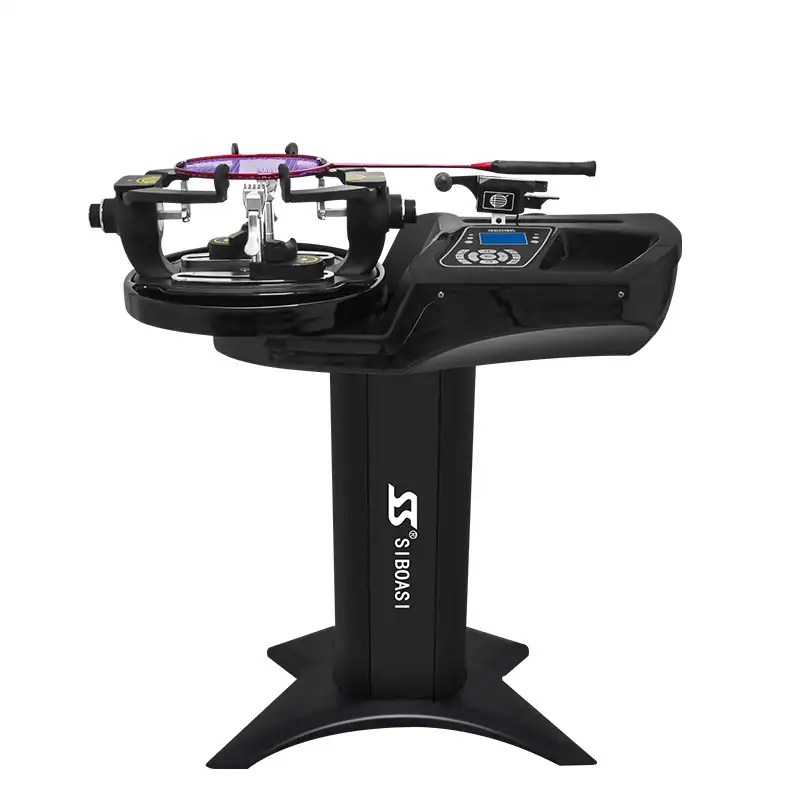The categories are Drop Weight, Crank and Electronic.
Please note S&P costs can be quite significant, depending on where you are located. For instance, I inquired regarding the total cost to buy a high-end crank and was quoted a S&P of USD$850 which was in-addition to USD$1199 for the machine itself! My friend bought a lower end Drop Weight machine for USD$179 and paid an additional USD$132 for S&P.
Drop Weight*
 |
| Example of drop weight tensioner (low end model) from internet |
Default of the home stringer domain.
Prices from USD$179 (before S&P).
Some units can be upgraded with a electronic tensioning unit.
Pro: Cheap, simple to use, lightest of the stringing machines types, benefit of consistent-pull from gravity onto the drop-weight
Con: Can be less accurate and/or consistent for ratched-based mechanism units, spring for ratchet mechanism need replacing after few years (depending on tensions applied), slower due to method tensioning mechanism functions
Proprietary Drop Weight designs are not impacted by the most of the issues typically encountered by the ratchet based mechanisms. Such units can cost as much as cranks
Crank
 |
| Example of crank type tensioner |
Prices from USD$390 (before S&P).
These units can usually be upgraded with a electronic tensioning unit.
Some manufacturers have began offering portable model(s) using a crank for the tensioning mechanism.
Pro: Easy to use,tensioning mechanism auto-returns to starting point (labour saving)
Con: Not as accurate as electronic, no frills eg no pre-stretch or continous pull as the tensioning mechanism locks into place once the set tension has been reached; manual tensioning, springs need replacing after few years (depending on tensions applied), can be quite expensive for the better units, weight atleast 40-60kg for the stationary units in the shops, postage costs an arm&leg due to weight
 |
| Top view of crank type tensioner |
Electronic
 |
| Example of electronic type tensioner from internet |
Most expensive of the stringing machine type and normally found in the high-end, high-volume and/or professional shops - these are the dream machines.
Prices from USD$299 (before S&P)
The machines require an electrical source to function eg no juice, no stringing!
Some manufacturers have began offering budget portable model(s) with the electronic tensioning mechanism. Naturally these budget units are not as good as the high-end units - difference in quality of motors, programming in the microprocessor logic, etc.
The Standard De Facto for electronic upgrades is the Wise unit which can cost more than a low cost stringing machine itself!
Pro: Has all the bells-and-whistles that can be cramped into the electronics to control the stringing mechanism accurately eg pre-stretch, continous-pull, etc
Con: Expensive, require regular maintainence and/or calibration every quarter or monthly, stationary units can be extremely heavy; expensive postage costs for delivery (or for warranty!!!), parts expensive if replacement required